Food labeling doesn't need to be hard.
When you put a label on your food product, there are many requirements to have it be successful
The label has to be accurately applied. Plus you need it to convey your message or the packaging requirements for your industry, and it should last the lifetime of your product.
Food packaging comes in an ever-increasing array of containers and design shapes. This can be a challenge for small to medium companies with limited resources. Many times manufacturers are applying labels by hand which is very time-consuming and costly. But now there are automatic labeling systems of all sizes and types that can not only label just about any type of container, but they also are quite cost-effective.
Let's explore some of the many different styles of food packaging now available.
Food Containers and Labeling Recommendations
Top and/or Bottom Labeling
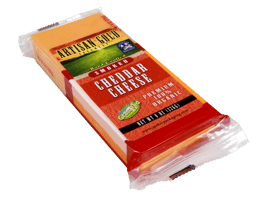
A label is applied to the top, bottom or multiple sides of a product. This is one of the most common container shapes. It can be a box, clamshell, shrink-wrapped, pouch or any other flat-sided product where a label can be wiped onto the surface. Sometimes products are required to have a label on top for identification/marketing purposes and will need another label on the bottom with ingredient or nutritional facts.
Label Materials: Weber offers a variety of labels to meet the demands of food packaging. Each material is selected to endure a wide range of environmental extremes from refrigerated to freezer/wet and humid storage. Plain paper labels work well for temporary labels while longer term labels need to be more durable like a BOPP or paper with a lamination for protection.
Labeling Systems: Depending on the required line speed, the Alpha HSM works great for one sided labeling, usually top-down. It can also be laid on its side to label sides of products. The HSM is a modular label applicator capable of high labeling speeds in a wide variety of optional sizes. The powered unwind and rewind keep the HSM labeling accurately and consistently at all times.
The Alpha Compact is a more economical version of a topside or bottom-apply label applicator. It is easy to operate and has a smaller footprint to fit tight spaces. Perfect for first-time labeling system users.
And the Pack Leader 211D is the right label applicator to use for top/bottom labeling. It comes with two ELF-20 label applicators mounted opposite each other on a built-in conveyor. This system allows you to label both top and bottom of a container in one pass.
And when you need date coding, Weber can supply their Markoprint X1-Jet inkjet coders. The system can mount right on your label applicator and uses convenient HP ink cartridges for no-mass coding.
Wrap-Around Bottle Labeling
A label is wrapped around a straight-sided container like a bottle, jar or cylinder. Food containers for sauces, oils, salad dressings, and more can be labeled accurately and quickly at up to 40 products or more per minute. If your container has a taper, that can be handled with a different applicator that angles the label (see Tapered Container Labeling below.)
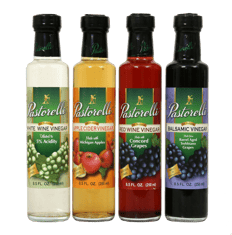
Label Materials: You can use a variety of labels to label your round container depending on the usage and storage. When picking a material, think about how durable the label needs to be. If the container holds oils, sauces or something that might stain or make the ink run on the label, you should use a gloss or matte laminate for protection. Plain paper labels work well for temporary labels while longer term labels need to be more durable like a BOPP or paper with a lamination for protection.
Labeling Systems: Most labeling systems are chosen by the label size and line speed needed. If you are labeling small containers with labels under 4" tall, the Pack Leader ELF-50 is a very economical solution. The ELF-50 is a portable tabletop unit that can be moved into production when needed. These are usually used with hand-fed production but you could connect to an automated line as long as you keep it to about 25-30 products per minute depending on product size.
When you need to go faster and perhaps use a larger label, the Pack Leader PL-501 is the choice. You can use labels up to 6" tall and apply them at speeds up to 40-50 products per minute. It is super reliable and easy to set up. The PL-501 is a staple in many food and beverage companies.
When you have a food production line that is all about speed, the Pack Leader PRO-625 can help you label at up to 130'/minute. The PRO-625 can do wrap-around labeling as well as one side and two-sided labeling of containers. The labeling heads can tilt on axis so they can be used with tapered or shaped products.
And when you need date coding, Weber can supply their Markoprint X1-Jet inkjet coders. The system can mount right on your label applicator and uses convenient HP ink cartridges for no-mass coding.
C-Wrap (Clamshell) Labeling
Many food packaging operations are now using clamshell containers for bakery goods, pre-made meals, fresh produce, and much more. A long continuous label is applied to three sides of container. These are the standard labels used by many bakeries for clamshell labeling of cookies, doughnuts and muffins. The label is presented by the applicator and the clamshell literally runs into it. Brushes then wrap the label on top and beneath the container as it travels by. The label acts as a closure for the container.
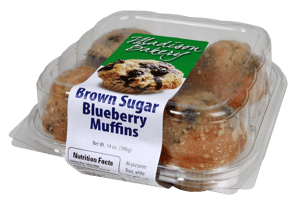
Label Materials: Most times, labels used in clamshell labeling are very temporary, usually only for a day or two. Paper labels are the economical choice here. Preprinted labels can be colorful and protected with a gloss or matte varnish for added durability, especially during shipment. Laminates are not used very often as this makes the container harder to open unless the label is perforated.
Small bakeries or food companies that use clamshells might be using preprinted labels that leave room for variable data to be added by a thermal transfer printer. This is usually when a small run of labels is needed or there are frequent changes in ingredients or nutrition facts. Often times these labels are hand-applied.
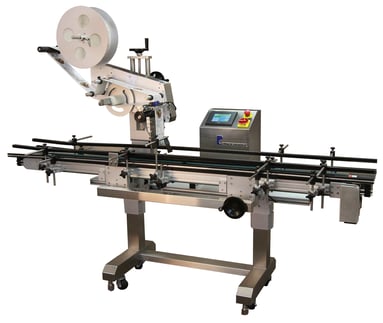
Labeling Systems: The best option for a clamshell labeling system is the Pack Leader PL-211CS which is specifically designed to apply labels on three sides of a product. The PL-211CS is built for a diverse range of container sizes is fast and easy. The standard one-touch screen and label sensors make it simple to adjust for various labeling applications. And, with the manual position setting, your labels are placed accurately on the product, each and every time.
If you need date coding, Weber can supply their Markoprint X1-Jet inkjet coders. The system can mount right on your label applicator and uses convenient HP ink cartridges for no-mass coding.
Recessed Lid Labeling
A wide variety of today's pre-packaged foods come in clear plastic containers that have recessed lid for added strength. Foods like prepared salads, sauces, produce, spices, dips, soups and more find their way into these containers. It can sometimes be tricky to get your label automatically applied correctly as it has to reach into the recess to stick and adhere to the package.
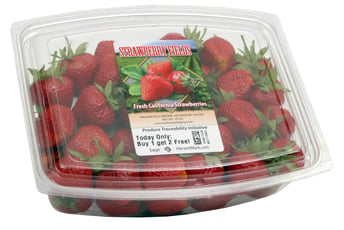
Label Materials: Clear plastic containers often contain fresh products that need refrigeration or freezing. And the labels are usually the main branding POS labels for the product. You want to make sure your labels not only look fantastic, but will stand up to the low temperatures and moist conditions found in these environments.
If your food products are dry and will be stored in room temperature, you can go with a paper label but I would recommend a lamination for durability. You want that label to keep looking great to attract a buyer's attention.
If your products will see cold temps and moisture, I would recommend a vinyl or BOPP material that is made for cold temps and is moisture-resistant. Small quantities of either of these label types would benefit from digital label printing while larger runs of 10,000 or more would be more cost-effective being run on a flexo press.
Labeling Systems: Weber has two Alpha label applicators that work well for recessed labeling. The only real considerations are speed and price. The Alpha Compact is a more economical choice for top-down recessed labeling of these kind of containers. It has a small footprint and can label up to 164' per minute. An extended peeler plate allows the Alpha Compact to reach very close to the recess and get the label affixed.
The Alpha HSM is a modular high-speed label applicator that can apply labels up to 164 feet/minute. One of the unique features of the HSM is that you can hook up two Alpha HSM label applicators in tandem for zero downtime labeling. When one system runs out of labels, the other system automatically kicks in and seamlessly begins labeling where the other HSM left off. The powered servo drive unwind and rewinders increase labeling accuracy.
If you need date coding, Weber can supply their Markoprint X1-Jet inkjet coders. The system can mount right on your label applicator and uses convenient HP ink cartridges for no-mass coding.
Pouch Labeling
With the invention of the stand-up pouch, suddenly many products previously packaged in boxes now have a new high-tech home. Pouches, mainly made of plastic derivatives and recyclables, are often pre-printed. But many manufacturers use a generic branded pouch and call out contents on a colorful front label, usually accompanied by an ingredients/nutrition value label on the back. Pouches need to be labeled empty, before filling unless using special equipment.
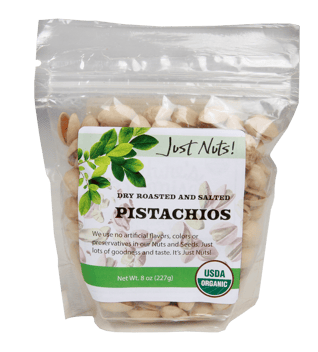
Label Materials: Pouch labels need to have a little give so that they stretch when the pouch is filled. BOPP or vinyl film labels work best as they adhere well and adjust themselves when the pouch expands. Paper labels can be used but often run into problems if the pouches are bulging.
Label Materials: Pouch labels have to have a little give so that they stretch when the pouch is filled. BOPP or vinyl film labels work best as they adhere well and adjust themselves when the pouch expands. Paper labels can be used but often run into problems if the pouches are bulging.
Labeling Systems: For entry-level pouch labeling, the Pack Leader ELF-20 is best. It has a small footprint and can be easily moved out of the way between packaging runs. When combined with a shuttle feeder, pouches can be automatically loaded onto the conveyor for labeling. Speeds up to 30-40/minute.
The Alpha Compact is the next choice for top-down pouch labeling. It has a small footprint and can label up to 60 pouches/minute depending on the speed of the shuttle feeder and label size. A wipe-down brush affixes the label to the pouch for better adhesion. It's easy to set-up and run.
The Alpha HSM is a modular high-speed label applicator that can apply labels up to 164 feet/minute. Combined with a high-quality shuttle feeder, this system can crank out accurately-labeled pouches quickly all day long. One of the unique features of the HSM is that you can hook up two Alpha HSM label applicators in tandem for zero downtime labeling. When one system runs out of labels, the other system automatically kicks in and seamlessly begins labeling where the other HSM left off. The powered servo drive unwind and rewinders increase labeling accuracy.
If you need date coding, Weber can supply their Markoprint X1-Jet inkjet coders. The system can mount right on your label applicator and uses convenient HP ink cartridges for no-mass coding.
Tapered Container Labeling
Labeling tapered containers can be tricky. We have all seen and used these product that come in the little tubs, often used for dips, sauces, seasonings, dairy products, produce and more. The containers usually have a top label (see recessed labeling above) and a side label. The tricky part is the side label. Because the container is tapered, it has a smaller circumference around the bottom than the top.
For a label to lay flat correctly and look level, the printed label needs to be curved. We call it a smiley label since it looks like a smile! When put on a taped container correctly, it follows the outside shape perfectly.
Label Materials: Since these labels are usually temporary, lasting 30 days or less, they can be either laminated paper labels or BOPP/film labels for more durability. Many times these containers are refrigerated so they need protection from the moisture and cold. Both types of labels work well with the plastic containers. Just be sure to get the specifications of the taper on your container and give it to your label printer as they need to match the curves for a successful match.
Labeling Systems: The Pack Leader PRO-625 is the best choice for consistency labeling tapered containers. With the PRO-625, labeling for a diverse range of containers is fast and easy – regardless of size or shape. The standard one-button teach product and label sensors make it simple to adjust for various labeling applications. And, with the manual position setting, your labels are placed accurately on the product, each and every time.
The PRO-625 has label heads that tilt on a 12-degree x-y axis, the PRO-625 even works well for tapered or shaped products. The label count feature lets you precisely track progress at any point during the production run. Chain aligners center your product before entering top hold-down controls that keep the product in place.
Did we cover everything?
I doubt it but that should cover 95% of the containers used in the food industry today. If you have something not mentioned or would like to talk about how we can help label your food items, contact us today at info@weberpackaging.com or use the free sample offer below. 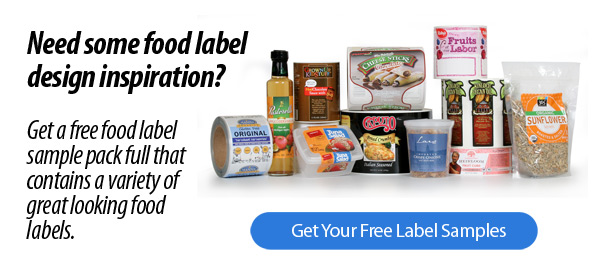
Weber Packaging Solutions has over 90 years of experience helping customers label their food products successfully. We can help you get the right labeling system, the best labels for the application, and back it with expert customer service to keep your production lines rolling.
 We've got some exciting news to share that is set to shake up the packaging world. Weber Packaging Solutions and the Numina Group have just announced a strategic partnership, and it's going to have a big impact on how businesses handle their future packaging production. Picture this: improved efficiency, increased productivity, and happier customers. Are you ready to dive in?
We've got some exciting news to share that is set to shake up the packaging world. Weber Packaging Solutions and the Numina Group have just announced a strategic partnership, and it's going to have a big impact on how businesses handle their future packaging production. Picture this: improved efficiency, increased productivity, and happier customers. Are you ready to dive in?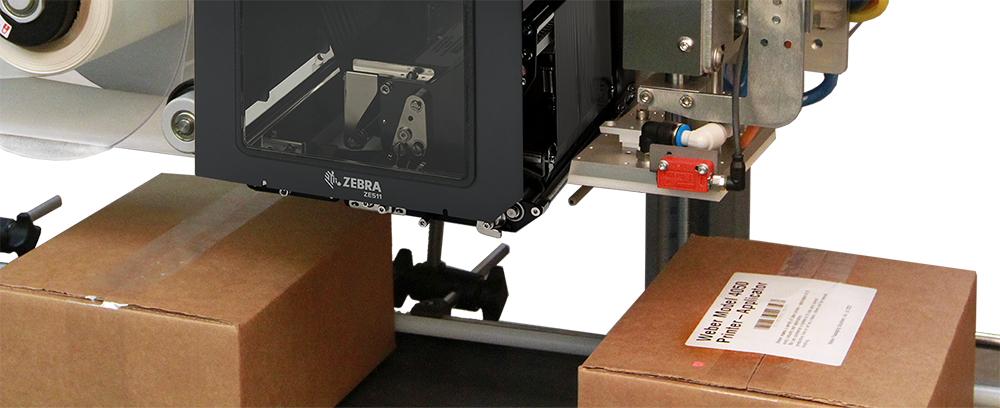







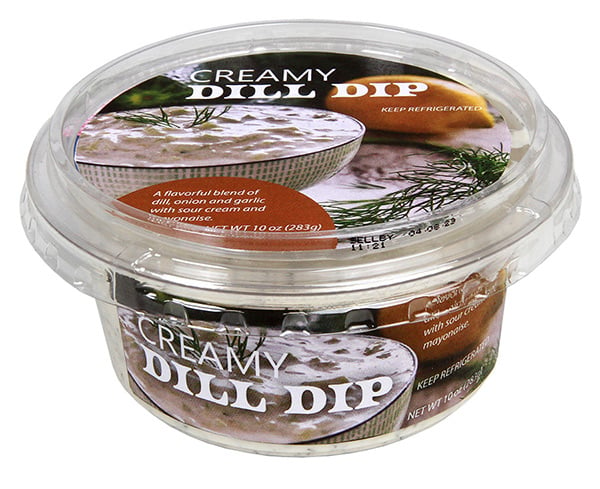
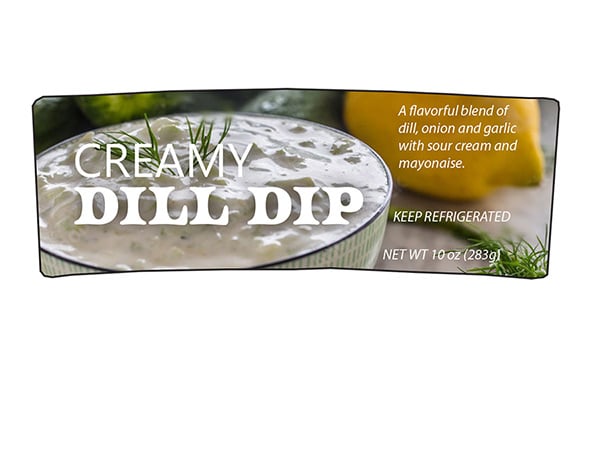

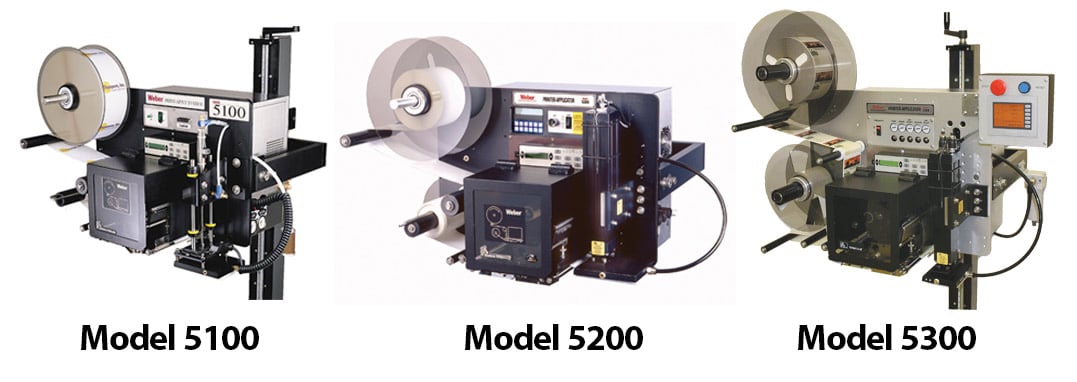 Weber has been
Weber has been 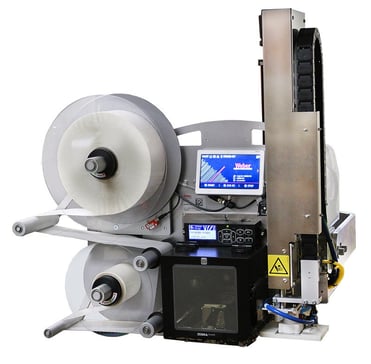 After a few years of design, testing and implementation, Weber is now pleased to roll out our new
After a few years of design, testing and implementation, Weber is now pleased to roll out our new 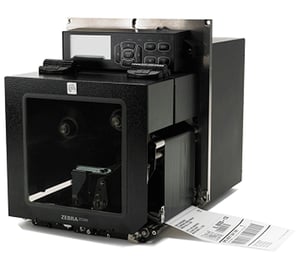 The first problem with many print-and-apply systems is that they’re a pain to set up. Zebra completely simplifies the process by giving you a large, graphical display with a simple five-button menu that makes setup a cinch.
The first problem with many print-and-apply systems is that they’re a pain to set up. Zebra completely simplifies the process by giving you a large, graphical display with a simple five-button menu that makes setup a cinch.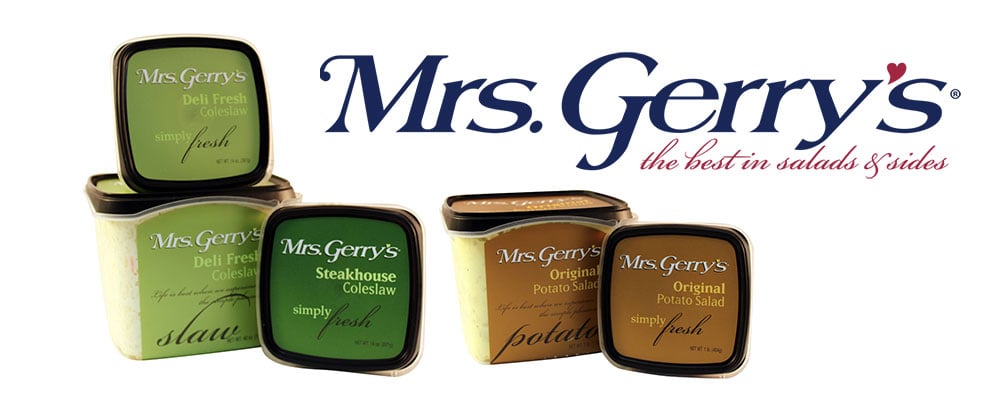
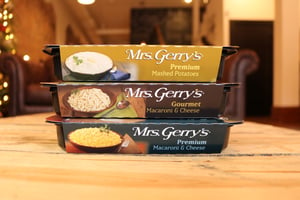 This was the case for one of Minnesota’s largest salad and side dish purveyors,
This was the case for one of Minnesota’s largest salad and side dish purveyors, 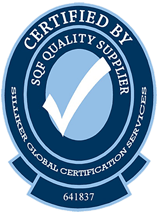 Gerry’s family became the first employees and they used Mrs. Gerry’s family recipe for potato salad as the first product. The company began to grow and, using fresh local ingredients, turned out 70,000 pounds of salad by hand in 1974. New recipes were added and building additions were added to accommodate the expanding product lines.
Gerry’s family became the first employees and they used Mrs. Gerry’s family recipe for potato salad as the first product. The company began to grow and, using fresh local ingredients, turned out 70,000 pounds of salad by hand in 1974. New recipes were added and building additions were added to accommodate the expanding product lines.